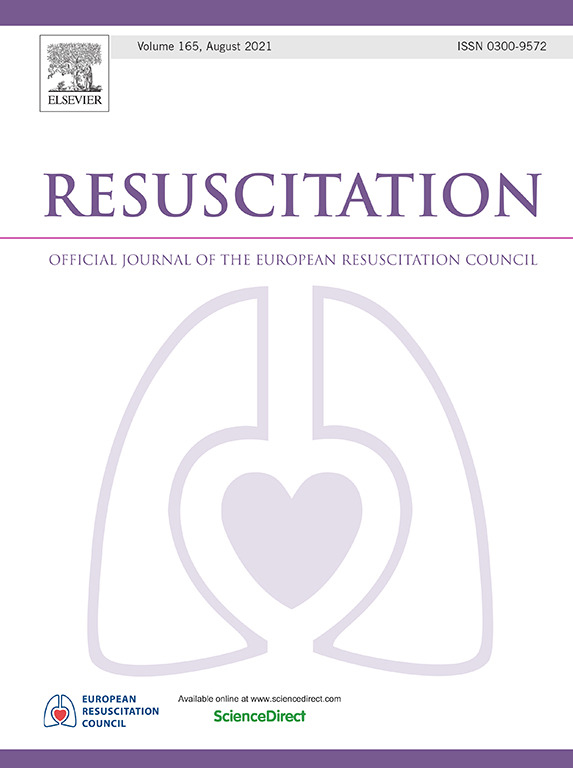Clinical utility of the ‘Impact of Event Scale-Revised’ for identifying Acute Stress Disorder in survivors of sudden out-of-hospital cardiac arrest: Results from the multicenter REVIVAL cohort
IF 6.5
1区 医学
Q1 CRITICAL CARE MEDICINE
引用次数: 0
Abstract
Objectives
To evaluate the Danish patient-reported Impact of Event-Scale Revised (IES-R) as a screening tool for Acute Stress Disorder in a population of out-of-hospital cardiac arrest (OHCA) survivors.
Methods
The REVIVAL study was designed as a multicenter cohort study of OHCA survivors in which survivors self-reported the IES-R. A subset of survivors underwent the clinician-rated Acute Stress Disorder Interview during hospitalization. Psychometric evaluation of the IES-R included reliability and validity testing. Structural validity was assessed using factor analysis. The receiver operating characteristic curve and the area under the curve were used to evaluate the discriminative ability of different IES-R thresholds in classifying probable Acute Stress Disorder, as determined by interview. Sensitivity and specificity were calculated for each cut-off value. The best performing IES-R threshold was applied to the total population to examine prevalence of probable Acute Stress Disorder.
Results
Overall, 244 survivors completed the IES-R, out of which 106 completed the Acute Stress Disorder Interview. Good internal consistency and convergent validity of the IES-R were observed. Factor analysis supported the original three-factor structure of the IES-R. An IES-R total cut-off score of ≥30 showed the best sensitivity-to-specificity ratio; the scale correctly classified 77% of the survivors with a sensitivity rate of 100% and a specificity rate of 75% (n = 106). Using this IES-R cut-off score, the prevalence of probable Acute Stress Disorder was 23% (n = 244).
Conclusion
The IES-R appears to be a useful screening tool for Acute Stress Disorder during hospitalisation and helps clinicians make post-cardiac arrest diagnostic and treatment decisions.
求助全文
约1分钟内获得全文
求助全文
来源期刊

Resuscitation
医学-急救医学
CiteScore
12.00
自引率
18.50%
发文量
556
审稿时长
21 days
期刊介绍:
Resuscitation is a monthly international and interdisciplinary medical journal. The papers published deal with the aetiology, pathophysiology and prevention of cardiac arrest, resuscitation training, clinical resuscitation, and experimental resuscitation research, although papers relating to animal studies will be published only if they are of exceptional interest and related directly to clinical cardiopulmonary resuscitation. Papers relating to trauma are published occasionally but the majority of these concern traumatic cardiac arrest.
 求助内容:
求助内容: 应助结果提醒方式:
应助结果提醒方式:


